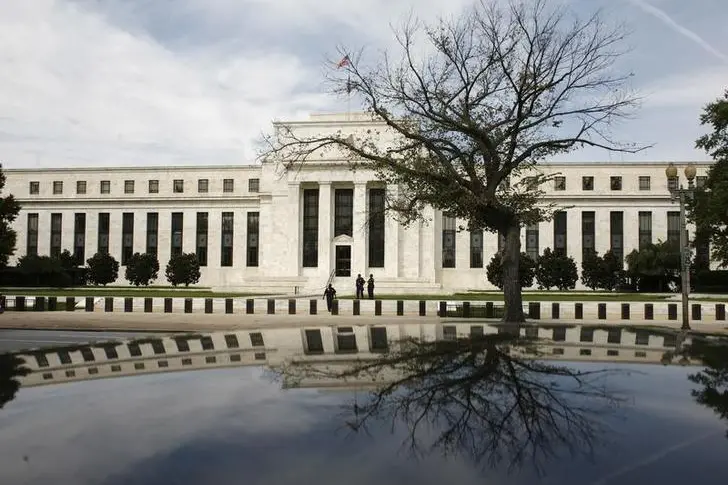PHOTO
It's fear and greed in the fixed-income markets once again as traders bet the Federal Reserve is done raising interest rates, but aren't quite sure that it won't still break the U.S. economy. Case in point is the market for low-rated companies.
In recent days, as it started to appear that the Fed rate- hiking cycle might have peaked, investors have shown more willingness to dip their toes back into junk-rated bonds.
But they are going only as far as the safest bets in the junk category, bonds rated BB and B. The riskiest credits, rated CCC or below, are still shunned.
"There is a tug of war between those who believe the Fed is engineering a soft landing and those who are still fearful that a recession is going to result from such aggressive tightening,” said Edward Marrinan, credit strategist at SMBC Nikko Securities Americas.
Investors were still wary of “buying riskier credits when such companies could be challenged by higher costs and less hospitable economic conditions,” said Marrinan.
PRICED OUT
Last week, as Treasuries reversed weeks of a selloff amid hopes the Fed was done, funds that invested in the asset class saw inflows week-to-date of $2.89 billion compared to outflows of $953 million in the prior week, according to JPMorgan data.
Junk bond spreads, the additional interest rate investors demand over safe Treasury bonds, tightened sharply.
The spreads of those rated BB and B, or the higher rungs of junk, had tightened 47-52 basis points last week, according to Informa Global Markets data. But the riskiest CCC-rated bonds had tightened just 24 basis points.
Four junk bond issuers – Bombardier, Venture Global LNG, Smyrna Ready Mix Concrete and InfraBuild Australia - announced bond offerings on Monday. Most of the bonds were secured by guarantees or collateral and all had ratings in the B to BB band, reflecting an investor base that was not completely risk-on, said Peter Knapp, credit analyst at Informa Global Markets.
“Lower-rated issuers have effectively been priced out of the market,” said Winnie Cisar, global head of strategy at CreditSights.
“We have not seen any CCC bond deals in quite some time and even receptivity to B-rated companies can be spotty depending on the sector and credit story,” said Cisar.
CREATIVE FINANCING
So far this year, junk bond issuers with B and BB ratings raised $134 billion from bond markets compared to $77 billion in the same period in 2022 while those with CCC ratings were able to raise just $2.37 billion this year compared to $12.21 billion last year, according to Informa Global Markets data.
The spotty access to bond markets does not bode well for poorly rated companies. Some $480 billion of junk-rated bonds and loans are set to mature through 2025, according to Morgan Stanley.
Two-thirds of these maturities were rated in the B and BB categories, which may be able to absorb higher funding costs. But some 55 issuers with debt maturing before 2025 were either already distressed or face extremely poor refinancing economics, the bank's report said.
This cohort of borrowers have a total of $155 billion in high-yield index-eligible debt.
Moody's said these debt maturities were already contributing to rising default rates and it expects the rate will peak at 5.6% in January 2024 before easing to 4.6% by August 2024.
Manuel Hayes, senior portfolio manager at London-based asset manager Insight Investment, said a lot of default risk is already priced into the market "with expected losses on any reasonable increased default amounts being manageable and less impactful versus previous default regimes."
Those without debt market access are resorting to taking loans from private lenders who have shown interest in absorbing some of the refinancings.
And some are using creative financing techniques, including liability management transactions that make them look more creditworthy, to raise new money, Barclays strategists said in a recent note.
In those transactions, called "double dip," debt is issued by a subsidiary, with guarantees from the parent and other subsidiaries. The subsidiary then gives a loan to the parent which then becomes collateral for the new debt.
That is likely bad news for some investors in such companies' bonds.
"The recovery prospects of longer-dated secured and unsecured bonds can fall if creative solutions result in existing holders losing access to collateral," the strategists wrote.
(Reporting by Shankar Ramakrishnan; Editing by Paritosh Bansal and Andrea Ricci)





















